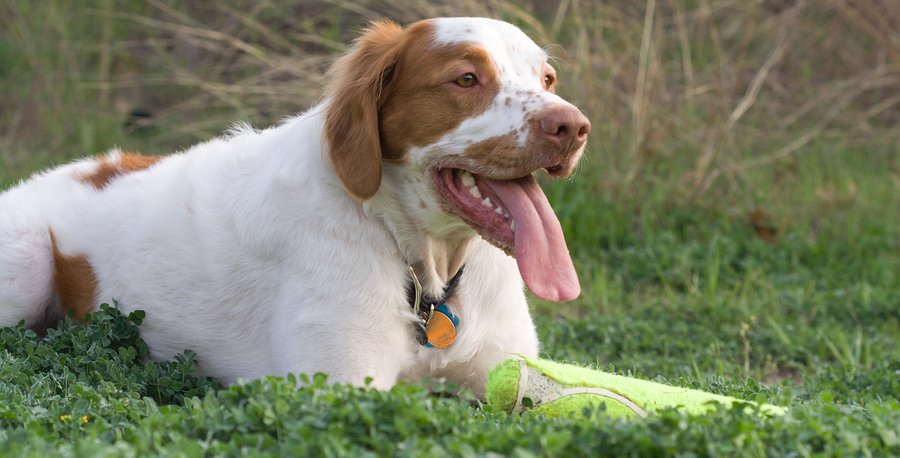Article Summary:
- Pets are susceptible to heat stroke and signs include heavy panting, disorientation, excessive salivation, lethargy, and changes in color of gums and tongue.
- Heat stroke can lead to permanent organ damage and death in pets. Short-nosed breeds, highly active breeds, and obese older pets are the most likely to succumb to heat stroke.
- Dogs and cats can’t cool themselves as efficiently as humans do as they sweat only through their paws. Instead, they pant to cool down. Cats lick themselves.
- Learn how to cool your pet down and avoid UV rays and hot pavements.
Heat Stroke Risk to Your Pet in Hot Weather
By now, you’ve probably read or heard that leaving dogs in hot cars, even for a minute, even with the windows down, is dangerous. But the danger to domestic pets extends far beyond hot-car risks. Just as people can get heat stroke, so can animals. When the weather is very hot, as it has been of late, or the sun very direct, your dog or cat can succumb. High humidity increases the risks. Signs of heat stroke in pets include:
- Heavy panting
- Labored breathing
- Glazed eyes
- Rapid heartbeat
- Excessive thirst
- Lethargy
- Lack of coordination
- Profuse salivation
- Vomiting
- A deep red or purple tongue and/or pale, grayish gums
Cats, in addition, may resort to excessive grooming. Left untreated, your pet could have seizures, become unconscious, and experience permanent damage to its organs. Note that dogs have a normal body temperature of 101 to 102 degrees Fahrenheit. Once their temperature rises above 104 degrees, they’re in trouble. Cats run about one degree higher.
Certain Breeds Are More Vulnerable to Heat Stroke
Studies show that the dogs most commonly diagnosed with heat stroke are Labrador retrievers and Golden Retrievers, although experts suspect that might be because these breeds tend to play to the point of exhaustion, even in heat. Other particularly vulnerable breeds include those with short snouts, such as bulldogs, boxers, and pugs, since these dogs cannot cool themselves as easily through panting as those with longer snouts.1Stregowski, Jenna, RVT. “How Hot is Too Hot for Dogs?” 20 April 2019. The Spruce Pets. 22 July 2019. http://www.thesprucepets.com/what-is-too-hot-for-dogs-3975543 Also, breeds that originated in cold climates, like huskies, malamutes, and Newfoundlands, seem to have particular difficulty in hot weather.
Dark fur, like dark clothing, retains heat, so dark-furred pets may overheat faster than the blonds (who sunburn more easily). Other factors that may predispose pets to heat-induced illness include age (older dogs more likely to succumb), obesity, and poor physical condition. Finally, the Humane Society warns that pets with white ears are more vulnerable to skin cancer.
Dogs and Cats Don’t Sweat
If you’re human, you’ve undoubtedly had the experience of sweating when things get too hot. Unpleasant as it is, sweating cools you down (and by the way, sweat has no odor. It’s the bacteria it picks up on the surface of your skin that gives it that pungent aroma). The cooling effect is the result of sweat moistening the skin, which makes your skin feel cooler, and evaporation, which removes heat from the surface of your body.
But while humans have an average of two million to four million sweat glands all over the skin, dogs and cats sweat only through their paw pads, and paws don’t provide enough surface to cool the animal. Instead, your pet pants to cool down, allowing heat to escape from its tongue and nasal passages. If you see your pet panting heavily, it’s probably overheating. Cats also lick at themselves, coating themselves in liquid, which serves the same function as sweating.2Glass, Don. “Do Cats Sweat or Pant When they Overheat?” 7 June 2013. Moment of Science. 18 July 2019. http://indianapublicmedia.org/amomentofscience/do-cats-overheat/
What to Do if Your Pet Overheats3 http://amcdocs.com/the-effects-of-heat-on-dogs/,4http://vcahospitals.com/know-your-pet/heat-stroke-in-dogs
- Remove the pet from the hot area immediately. If possible, move him to shade or air conditioning. Do not cover him, but place a cool, wet towel under him.
- If you can get your pet to the vet, do so, as intravenous fluids and oxygen may help.
- Put cool, not cold, water on her paw pads and ears.
- Stick a damp cloth between his hind legs, armpits and on his neck.
- Apply rubbing alcohol to paw pads to dilate pores and increase perspiration.
- Allow your pet to drink small amounts of water. Do NOT pour water down the animal’s throat.
- Monitor your pet’s temperature. When it lowers to 103.5 (for dogs), stop first aid measures.
Sunburn Risk to Your Pet in Hot Weather
In spite of the fur coat, sun can penetrate through to a pet’s skin, particularly when the pet has a thin, light coat. Dog breeds most at risk include dalmatians, boxers, American Staffordshire terriers, bull terriers, bulldogs, whippets, Chinese crested dogs, and others with little fur. White-haired and hairless cats, such as Peterbalds, Sphynx, Cornish Rex and Devon Rex are particularly vulnerable, although all cats can easily sunburn on the tips of their ears. And both dogs and cats can, and do, get skin cancer.
Veterinarians recommend keeping pets out of direct sun during the same hours you protect yourself from UV rays. This may prove difficult if your pet roams free outside, or if it loves to lounge in front of a window where the sun streams in (yes, your pet can burn through a window). If your pet will be getting significant UV exposure, you might consider using a suntan lotion specifically designed for pets. Remember, your furry friend will lick whatever is on its fur. Using a human product could prove toxic and dangerous to your pet, particularly if it contains zinc oxide or salicylates.
Why You Should NOT Clip the Pet for Summer
Although humans can imagine how unbearable it must be wearing a fur coat in summer, fur can actually prevent your dog from overheating. This is particularly true of “double-coated” breeds like German Shepherds, Huskies, Collies, and Samoyeds. As veterinarian James H. Jones of the University of California, Davis, explains, “Fur acts as a thermal regulator to slow down the process of heat absorption.” In other words, in hot weather, the pet’s fur absorbs the heat, not the animal’s body. Because of this, plus the risk of sunburn, clipping dogs short for the summer may not be a wise choice.
Burned Paws in Hot Weather
Because humans wear shoes, we may not be aware of how hot the pavement gets when temperatures climb. If the air temperature is 92 degrees, concrete surfaces rise to 114, and asphalt to 130 degrees. At such high temperatures, the paw pads can suffer damage. If your pet limps, lifts a paw, or resists walking outside, check the paws for redness or blistering.
The best way to avoid burned paws is to minimize exposure to blistering surfaces. Tips include:
- When there’s a heat wave, take walks early and late, when things cool down a bit.
- Walk on grass rather than on the pavement.
- Use paw wax to prevent burns. This can serve double-duty in winter to protect paws from frozen surfaces.
- Try doggy boots or socks. Some dogs won’t tolerate them, but it’s worth a try.
References
| ↑1 | Stregowski, Jenna, RVT. “How Hot is Too Hot for Dogs?” 20 April 2019. The Spruce Pets. 22 July 2019. http://www.thesprucepets.com/what-is-too-hot-for-dogs-3975543 |
|---|---|
| ↑2 | Glass, Don. “Do Cats Sweat or Pant When they Overheat?” 7 June 2013. Moment of Science. 18 July 2019. http://indianapublicmedia.org/amomentofscience/do-cats-overheat/ |
| ↑3 | http://amcdocs.com/the-effects-of-heat-on-dogs/ |
| ↑4 | http://vcahospitals.com/know-your-pet/heat-stroke-in-dogs |









